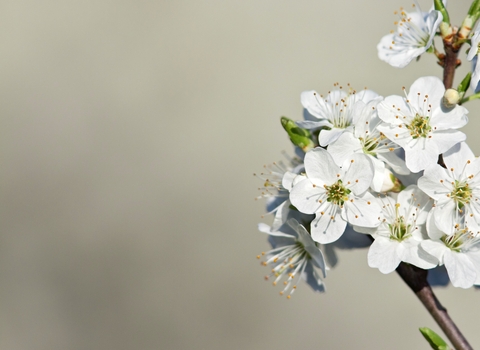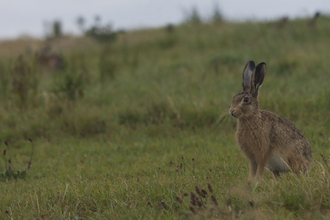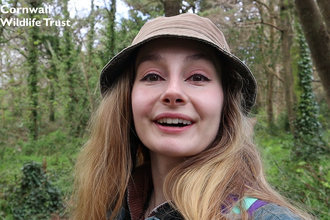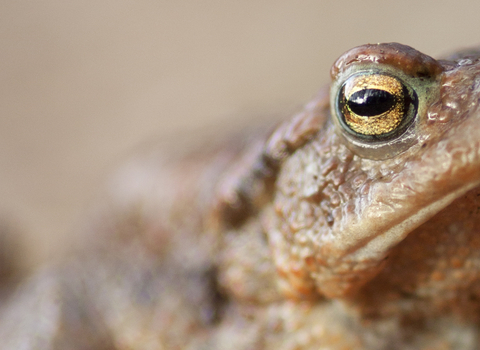We’ve finally sprung into spring, leaving the dark, cold days of winter behind. Expect March to bring growth, greenery and a feeling of new beginnings as spring flowers start to bloom and our furry friends awake from their hibernation.
Find out what wildlife you can spot this month.
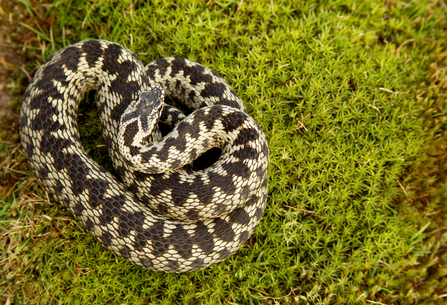
Adder, Image by Danny Green/2020VISION
Adder
By March we will have started receiving the first spring sightings of snakes and lizards, particularly adders. For your best chance of spotting one, go for a walk on the coast early in the morning. At this time, adders are basking in the cold light of dawn and are too sluggish to move away, giving you the opportunity to spot it before it disappears into the undergrowth. Take care not to disturb them and avoid walking your dog in adder territory if you’re out with your four-legged friend!
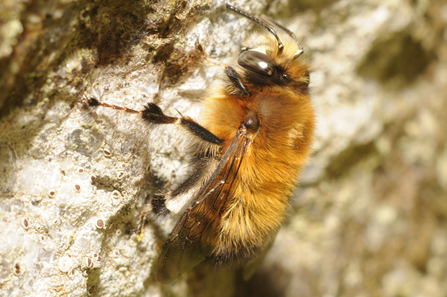
Hairy-footed Flower Bee, Image by Kevin Thomas
Hairy-footed Flower Bee
Before the bumblebees have really started to get going, look out for solitary bees visiting your garden. One of the most distinctive is the hairy-footed flower bee. Small and fluffy like a little bumblebee, the males are brown with a yellow face, but the females are almost entirely black, making them instantly recognisable. Look closely and you may see the long, feathery hairs on the legs of the male which give its name.
St Piran's Crab, Image by Adele Morgan
St Piran's Crab
St Piran’s Day is celebrated each year on March 5th as the national day of Cornwall. What better way to mark the occasion by heading out on a rockpool to spot the creature named after him! The St Piran’s Crab has red antennae and equal size claws, unlike other hermit crabs. It was rediscovered in Cornwall in 2016 on one of our Shoresearch Cornwall surveys after a gap of almost 50 years! Following a hugely popular national vote on BBC Springwatch, the red-legged creature was named the ‘St Piran’s Crab’ after the Patron Saint of Cornwall (who apparently was a hermit and even survived being thrown into the sea)!
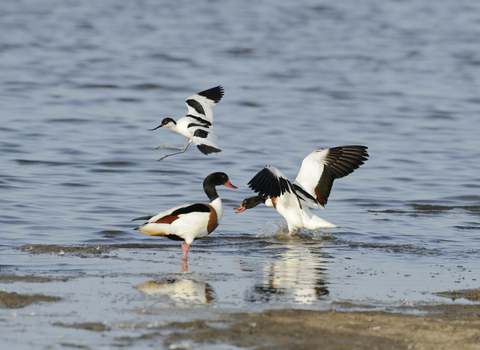
Shelduck and Avocet, Image by Terry Whittaker/2020VISION
Tamar Estuary
This March visit our Tamar Estuary nature reserve near Saltash. This reserve, together with adjoining parts of the estuary, forms one of the largest areas of mudflats in the south west and is of international importance for waterfowl and waders. Use the bird hide at the China Fleet Club to spot the very last of our winter visitors, including avocets and redshank, and look out for shelduck and kingfishers which can be seen all year round. A welcome retreat in the Cornish countryside, we say!
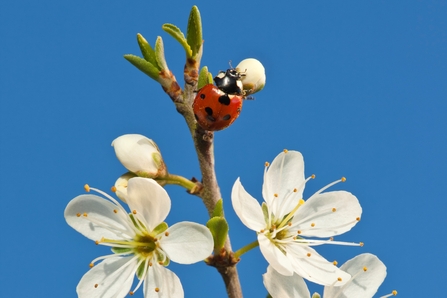
Ladybird on blackthorn, Image by Guy Edwardes/2020VISION
Spring Blossom
Early-flying insects have few choices when it comes to gathering pollen. Fortunately, several of our native shrubs are blossoming at just the right time. Blackthorn, which flowers early before the leaves are out, is starting to paint the hedges white. Yellow fluffy catkins dangle from willow branches and gorse, of course, may have been flowering throughout the winter – looks like kissing is still in season!
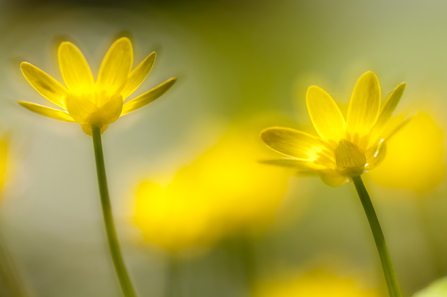
Lesser Celandine, Image by Ross Hoddinott/2020VISION
Woodland Flowers
The flowers we associate with woodlands are often the first to appear in the spring, taking advantage of the brief period of light before spring leaves close up the canopy. Look out for primrose and lesser celandine (the bright yellow heralds of spring), as well as alexanders and wood anemone which also flower in early spring. Stay and watch a while and you might see a queen bumblebee, not long out of hibernation, going from flower to flower as she gathers pollen to feed her next generation. Cabilla & Redrice Woods – our biggest woodland nature reserve – is a great place to catch a glimpse of some of these wildflowers.
Spring Blogs
Curious about what else can be found this season? Dive deeper into the topic of spring wildlife with our blogs below.

